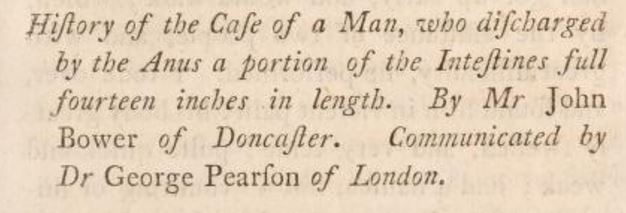The Annals of Medicine for the Year 1802 are the source of today’s extraordinary goings-on. This case was reported by John Bower, a surgeon from Doncaster:
January 17, 1796: Ed. Cooke, aged 40, a day-labourer, was returning to his home, about two miles from Doncaster, between ten and eleven o’clock at night. Being in a state of intoxication, … Read more










